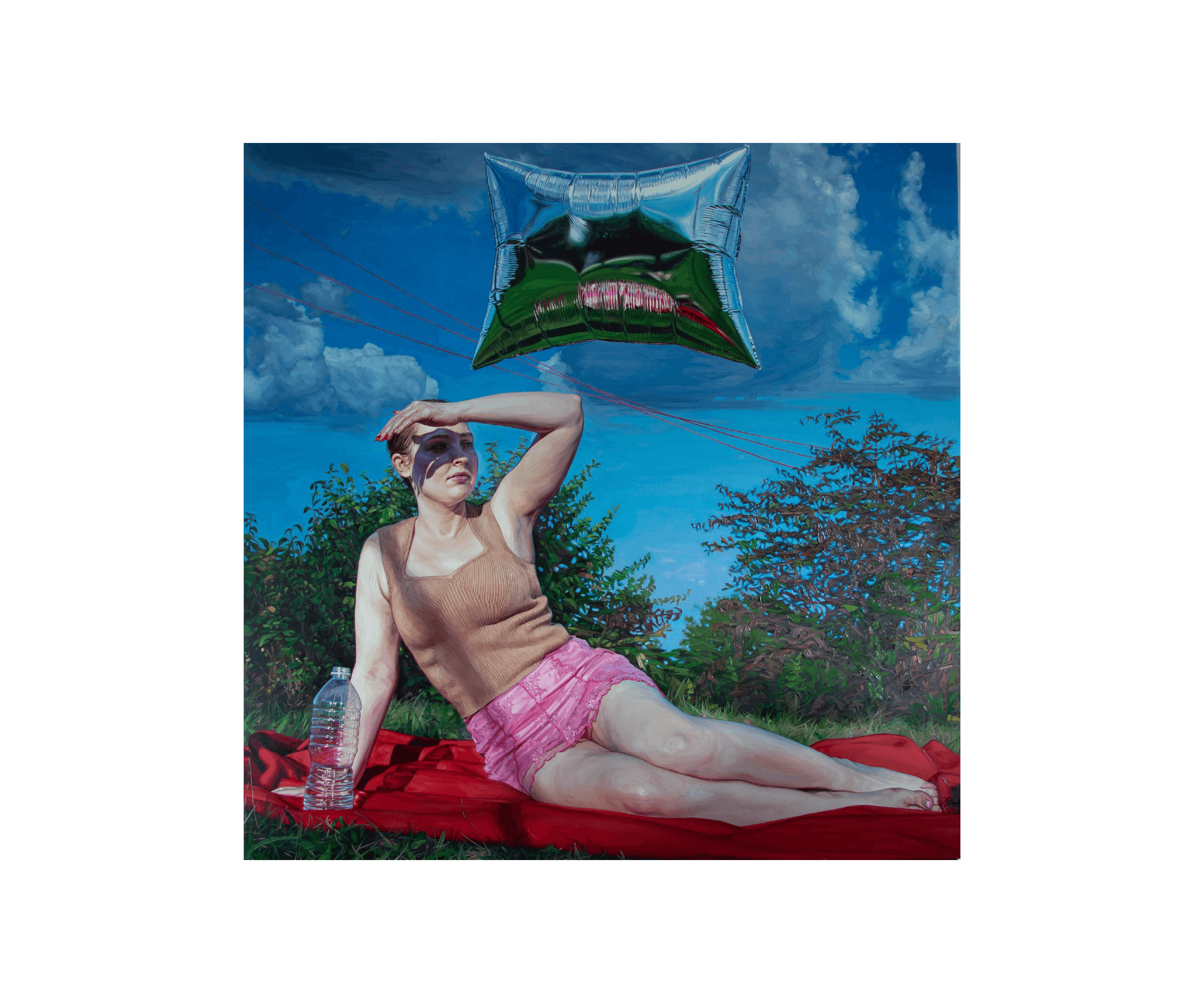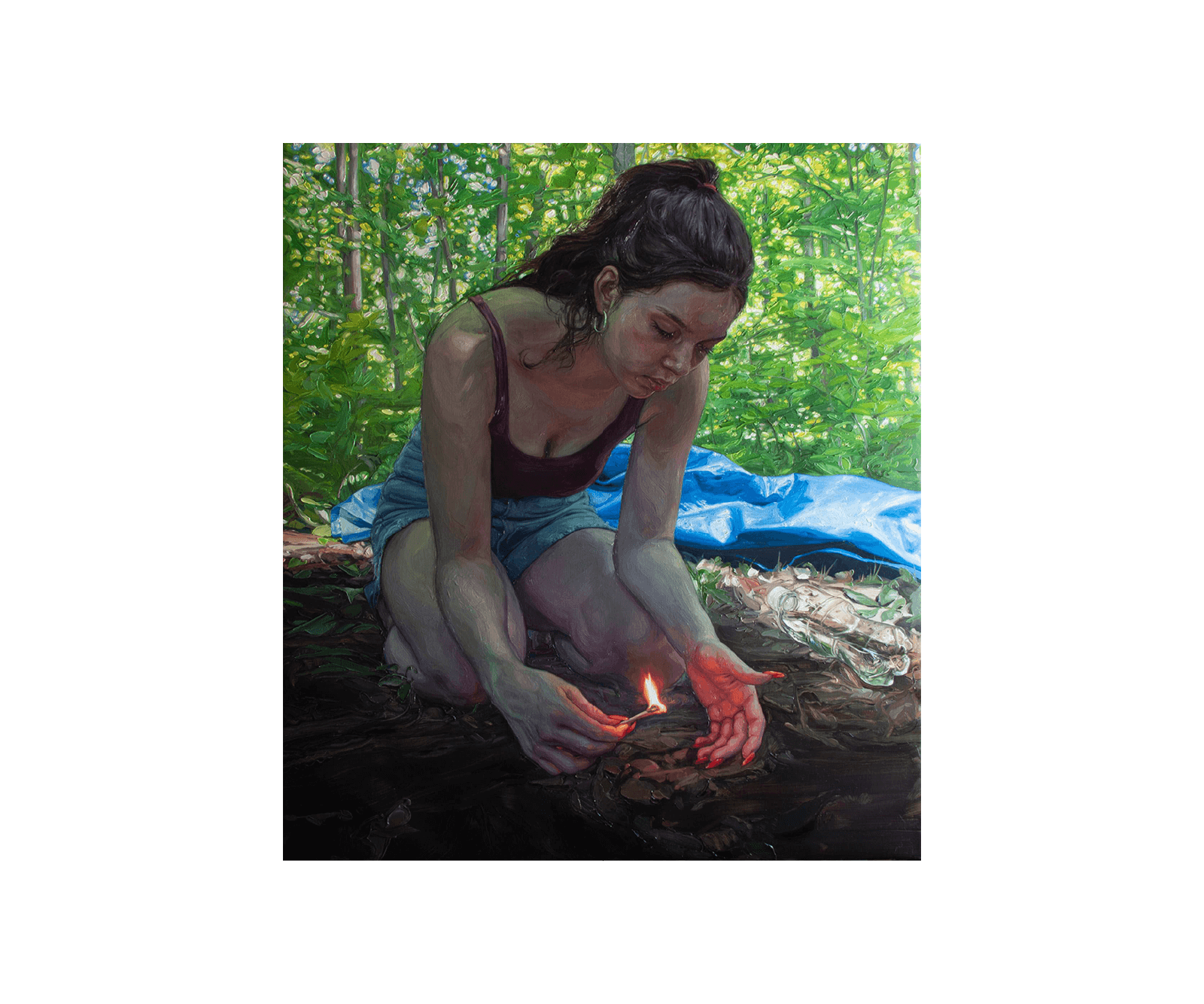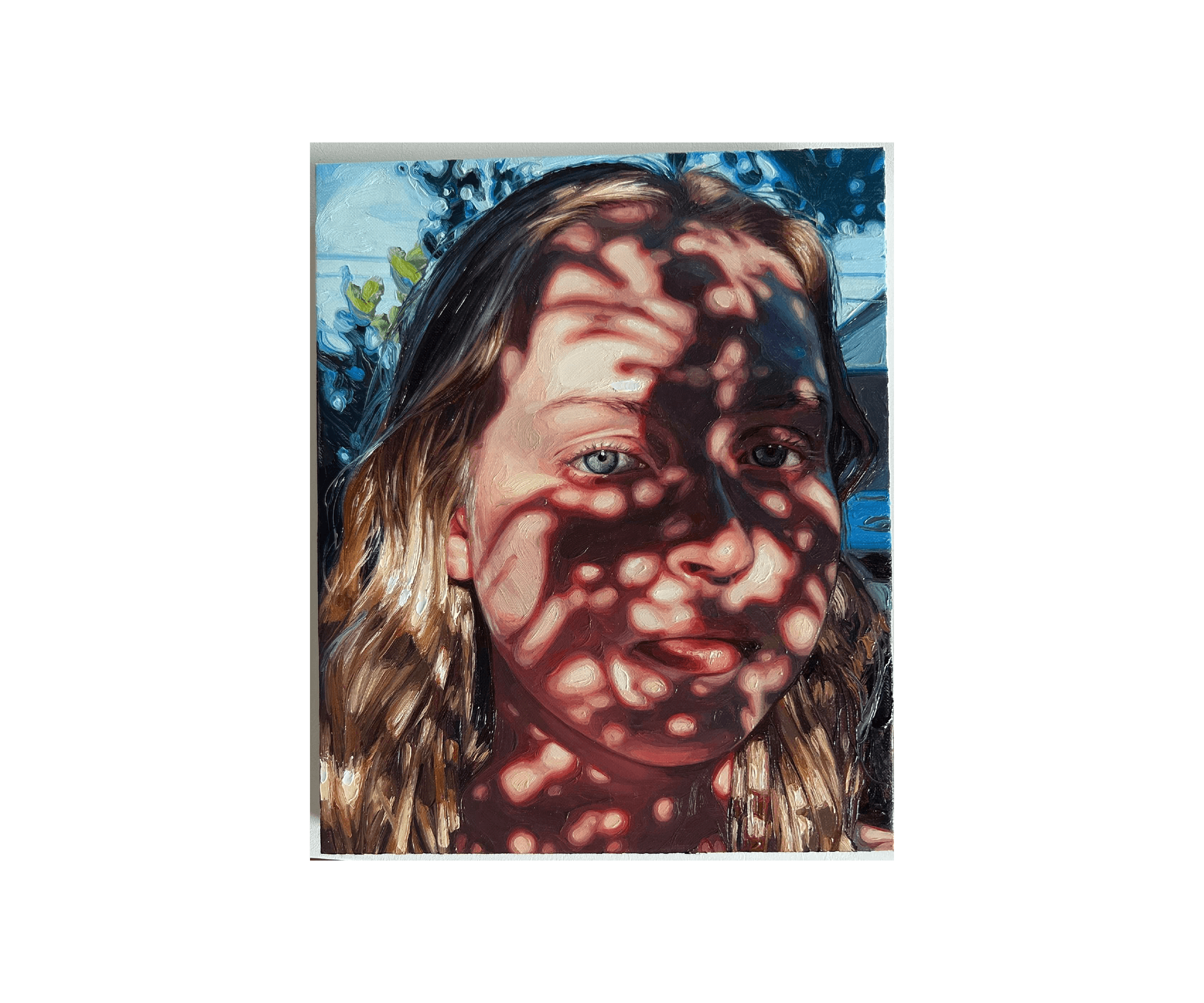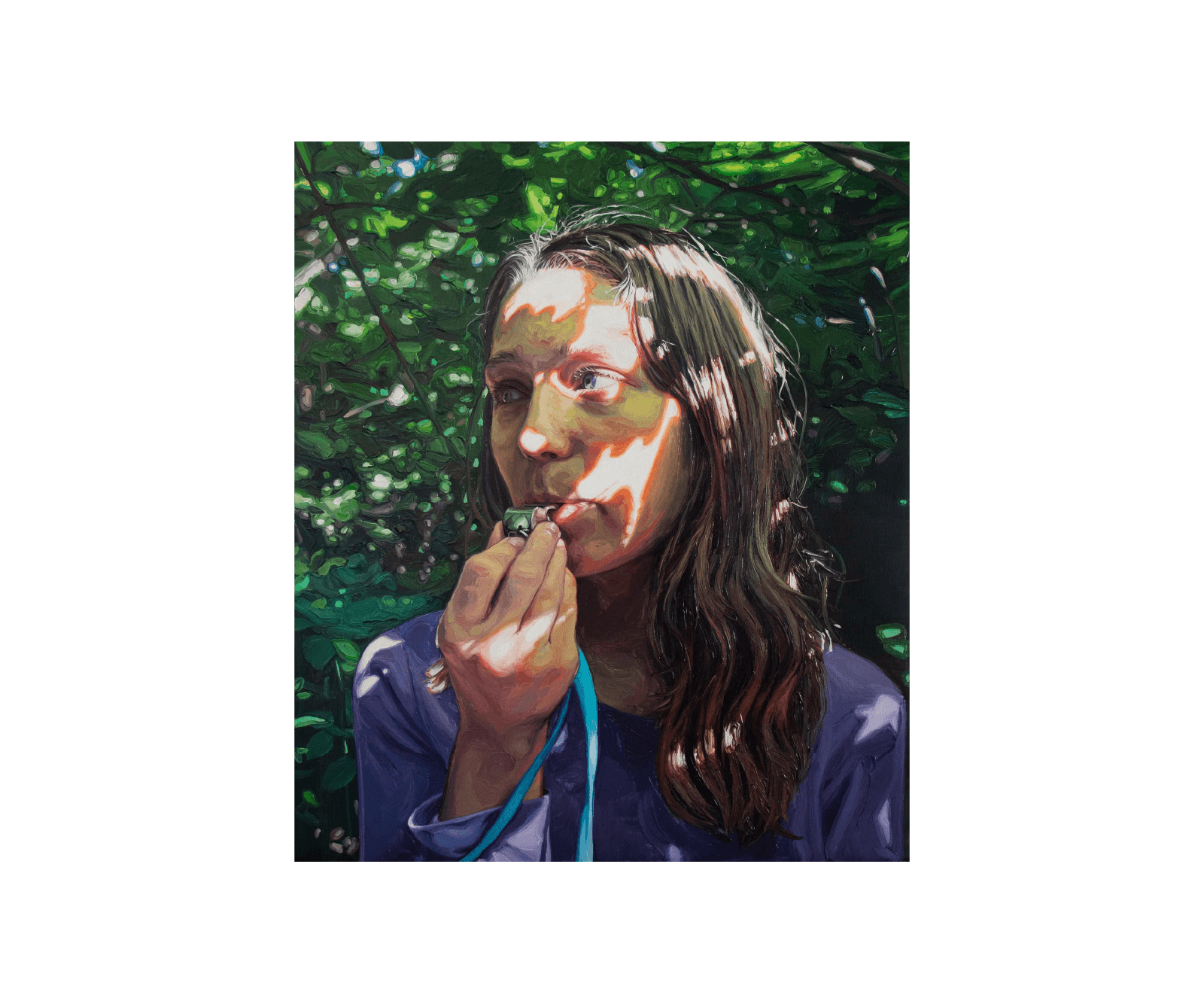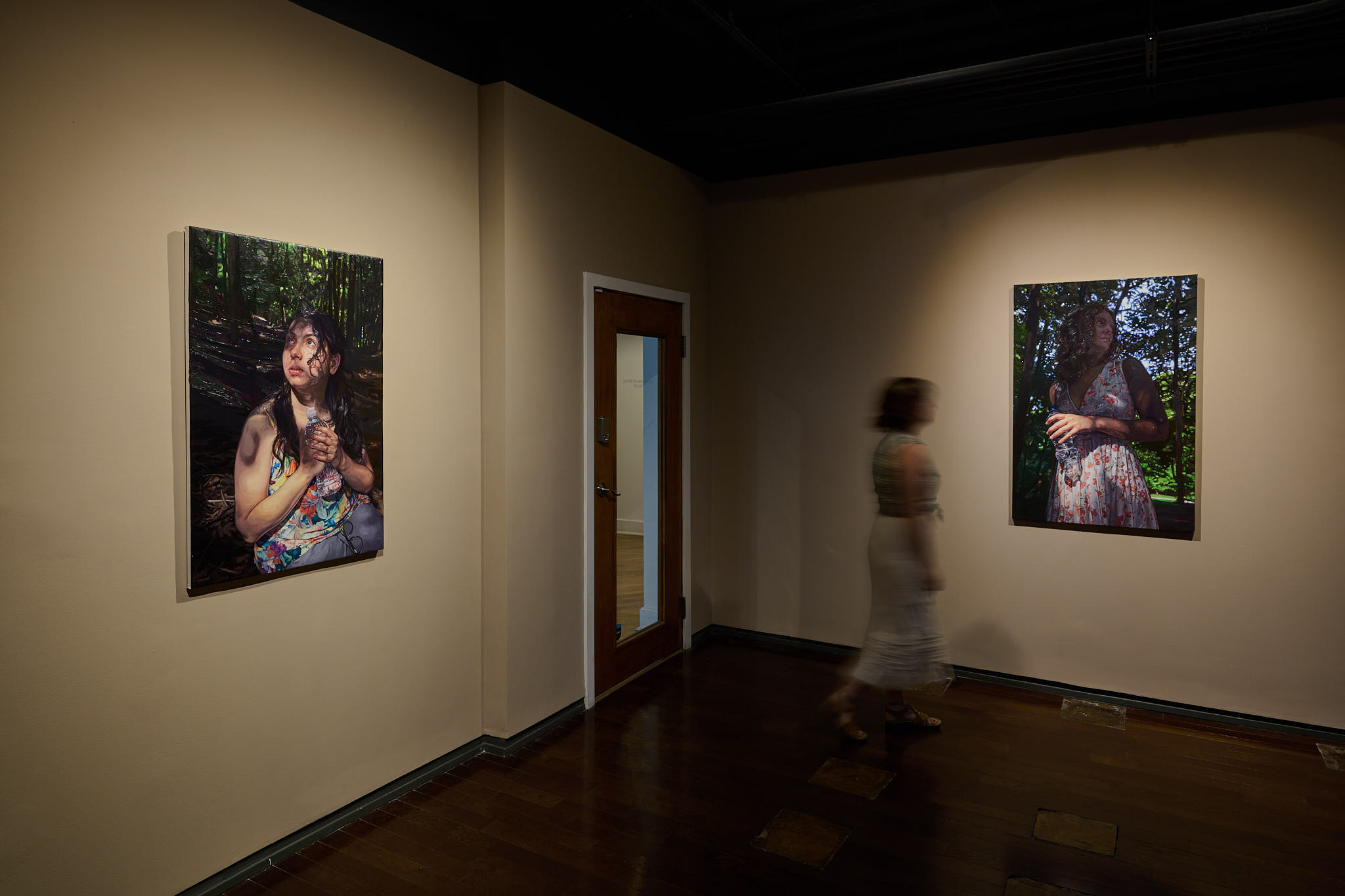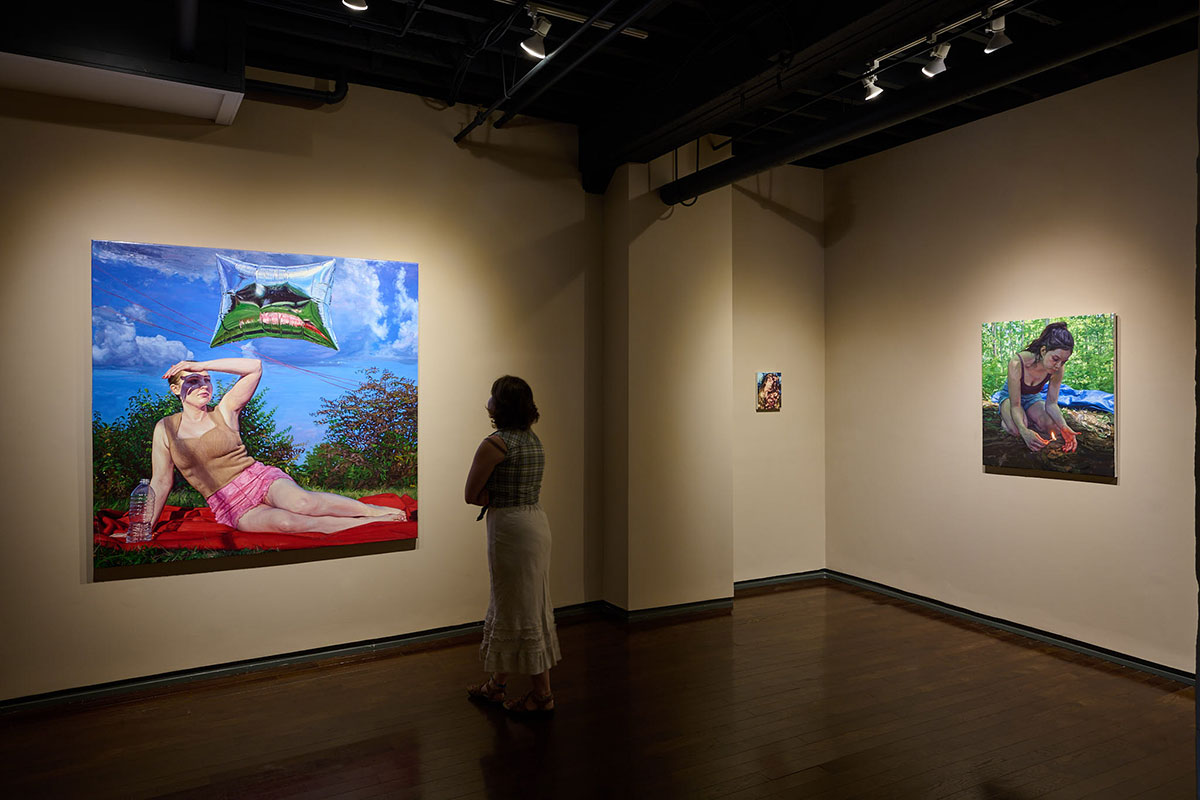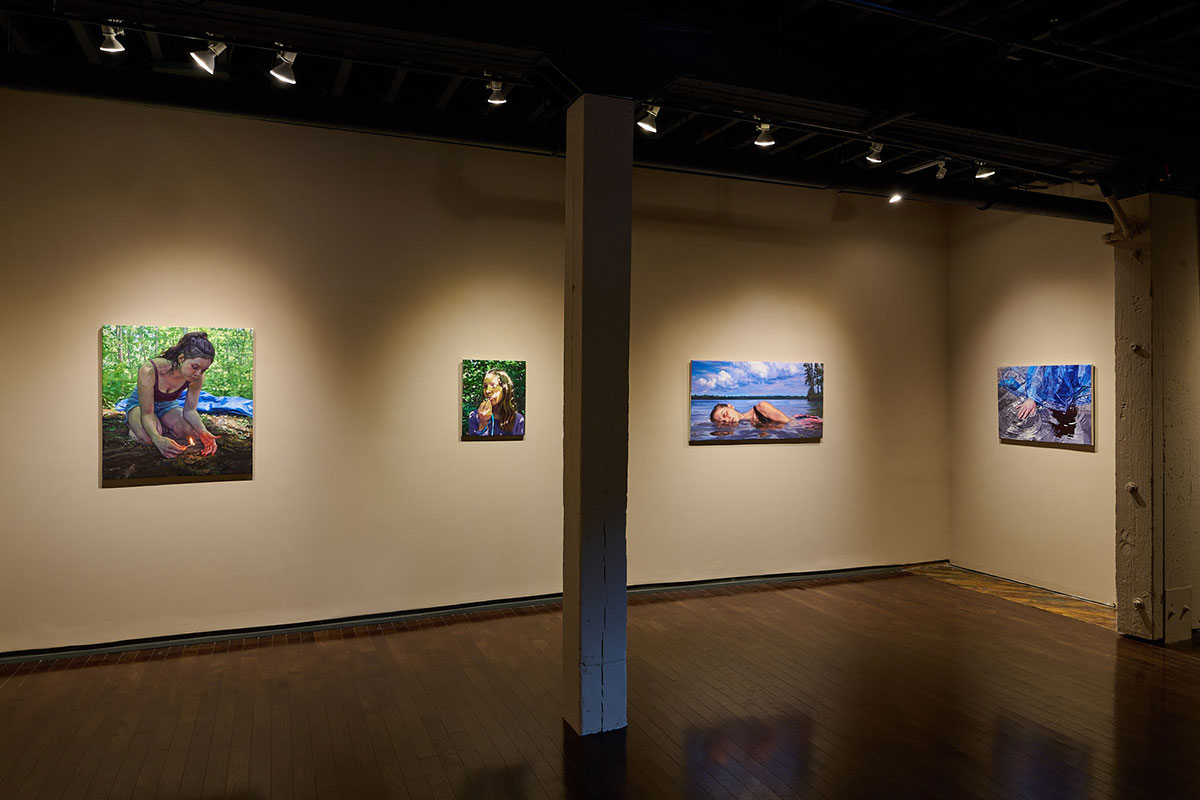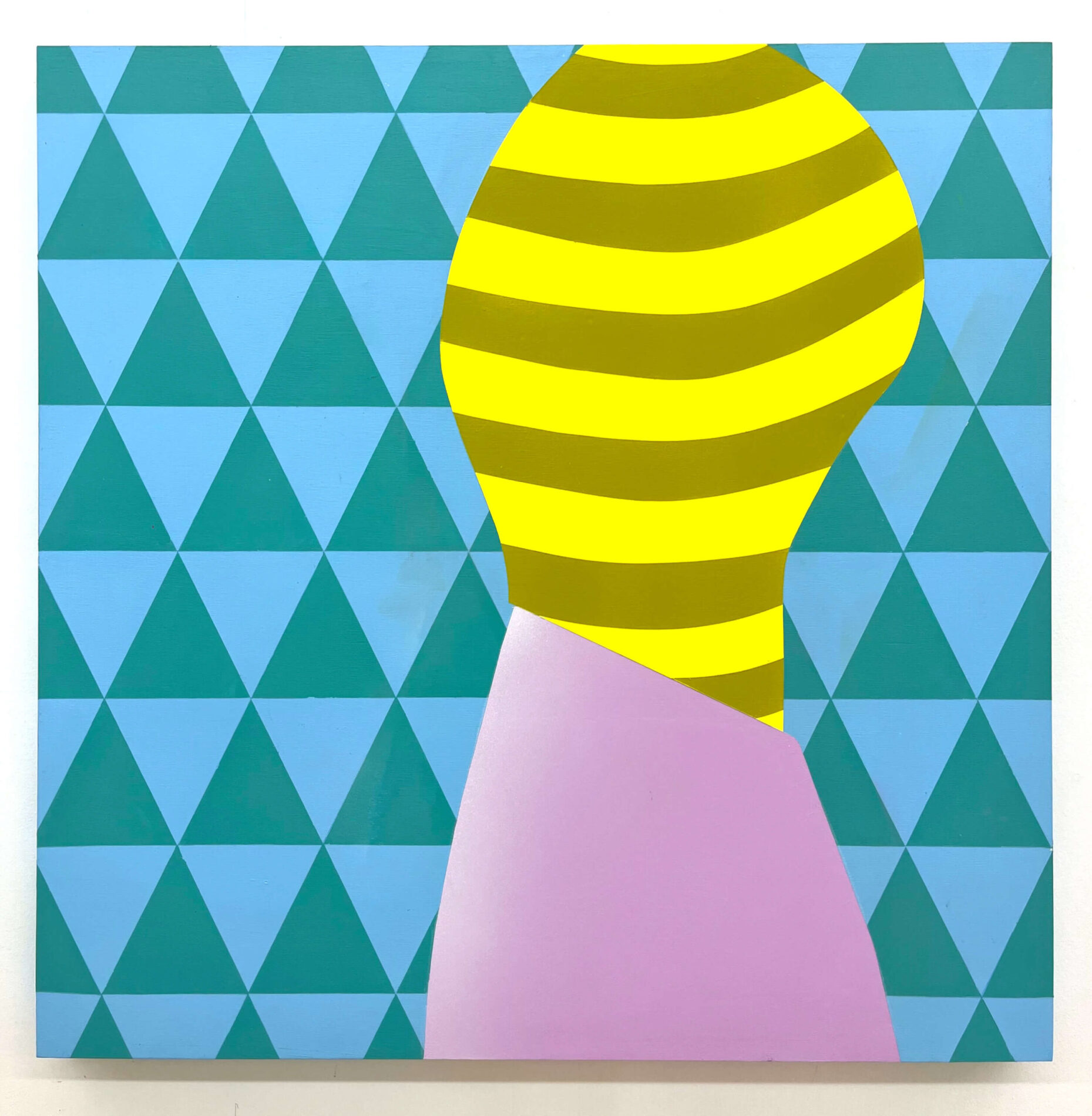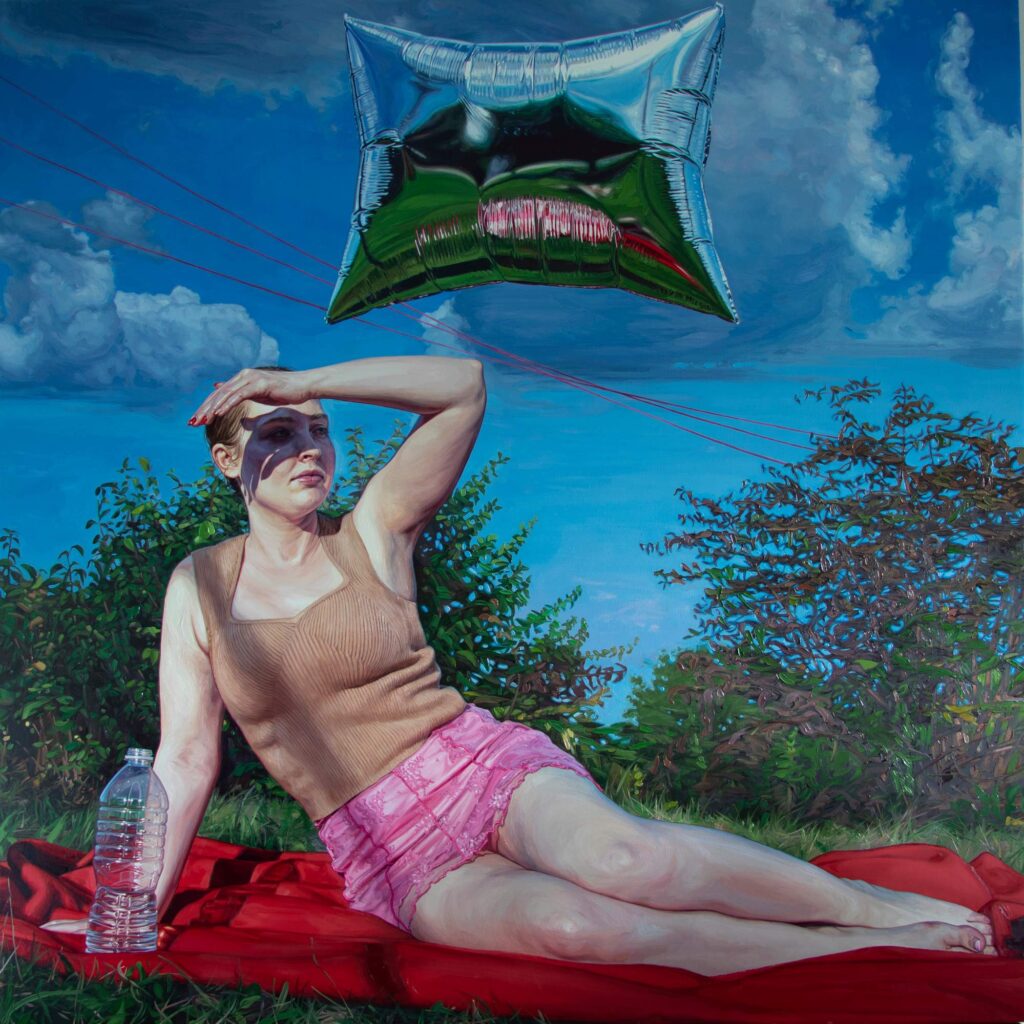
June 6 – July 12, 2024
Laura Sanders: Her Habitat
Opening Reception: Thursday, June 6, 5–7pm
Contemporary Art Matters is pleased to present ‘Laura Sanders: Her Habitat’, a solo exhibition on view June 6 through July 12, 2024, with an artist’s reception on Thursday, June 6, 5-8 pm. We are also excited to share an accompanying essay by acclaimed American poet Maggie Smith titled “Transformative Texts: On Laura Sanders’ Her Habitat” and a new short video “In The Studio With: Laura Sanders” by Will Gordon.
Transformative Texts: On Laura Sanders’ Her Habitat
Contemporary Art Matters, June 2024
I have admired Laura Sanders for many years. Admired seems like too sterile a word, given the way I feel when I take in her work. There is so much poetry in her paintings: the lacy shade of tree branches and leaves on a woman’s face, the ripples in the water, the light.
It’s enchantment more than simple admiration.
One of the aspects of her work that I’ve always admired—been enchanted by—is her devotion to the natural world and her depictions of women in landscapes. In many of these paintings, women, often a young women or girls, are not only in “nature,” but alone there. I place nature in quotation marks, because Sanders’ work also poses the question, “What is nature?” Is it something we go retreat into for solace or pleasure, or something we are surrounded by and living in? And who has access to the natural world? What kind of privilege does it require or assume?
There is a sense of vulnerability in these paintings, seeing women alone in a remote area. What are the implied risks and limitations? As women we are conditioned to be wary, always taking in our surroundings, monitoring situations for potential threats. The recent discussion of men vs. bears and the many resulting memes are proof enough. Why would so many women rather encounter a bear in the woods than a man? Any woman who walks or runs alone, or who hikes or swims alone, knows the answer to that question.
But Sanders doesn’t present women or girls as helpless in her work. Look: one may be reaching for a rock, or holding a whistle, empowered to protect herself. One is shielding her eyes from the sun to get a better look around. There is a tension between the implied risk and the freedom and autonomy of being alone in the natural landscape.
There is a meta aspect to her paintings that I relate to as a writer, because I foreground craft and process in my own work. I want to show my thinking on the page, not just the result of my thinking. Despite the realism of her work, Sanders doesn’t want the paintings be so realistic that you forget the medium. She consciously shows the brushstrokes. “Brushstrokes are my words,” Sanders said, when I visited her studio. Sanders is particular about how the paint is laid down—the physicality of paint is the language she uses.
Looking at her work, I never forget that there is a thinking, feeling human being behind it. The creative force behind these paintings is deeply concerned and attuned, but also witty and self-aware. We get a look into Sanders’ perspective and ethos in “Girl with Bottled Water,” a painting that grapples with climate grief with a wry nod to El Greco; the girl looks up like a saint, her eyes brimming with tears. The mylar balloon in “Cloud Formation” references Warhol’s Silver Clouds.
What a gift, to get up close, to see the texture and technique, to “read” these paintings in her particular language and take in all they have to say about history, ecology, feminism, freedom, and imagination. And like poems, these paintings are transformative texts. We can’t spend time with them and not be changed.
— Maggie Smith
Artist Talk
In the exhibition
Installation views
“I’ve really been focused on women, maybe the precautions that they need to take, things that you feel that you have to do in order to spend time alone outdoors, maybe forbidden areas because you are concerned about safety,” Sanders explains.
Laura Sanders is known for her paintings of young women and her new works continue on this path, with a figure alone in a nature setting. Through these larger and smaller scaled paintings, the artist considers the presence of women in nature and challenges the unspoken rule that wilderness is an unsafe place for women, especially by themselves. Her subjects are seen enjoying the environment with trees, air and sunshine while remaining alert to potential dangers, establishing their right to exist alongside nature.
In Shifting Baselines: Before You Can Remember, a woman rests on a picnic blanket in the grass, while an aluminum balloon looms above her head. The reclining woman is confidently looking afar. The object references Andy Warhol’s Silver Clouds, as well as the artist’s emphasis on environmental issues. The natural landscape contrasts against the artificial elements of the painting.
Fire Starter features a young woman kneeling over a lit match, poised to start a campground fire. Modern conveniences are seen littered behind her, including a half-full water bottle and a blue tarp. Green trees loom behind her, the dappled sunlight peeking through the dense cover of leaves. A wooded setting is found in many of Sanders’s paintings, including The Bather and Whistle Blower. The women in these paintings are caught in a moment of action, and the bright sunlight pierces through the leaves to serve as their spotlight. Always present is plastic, highlighting the juxtaposition of the artificial and the natural as environmentalism is as important as feminism to the artist.
As part of her process, Sanders works with models and uses photography to capture the immediacy of the moment in time, with the light coming through trees, or reflected on the surface of the water. It is in her studio where she brings the images to life, as she relishes the painting process, merging her techniques with her commitment to her ideals. Water Line exemplifies the beauty of her approach, as it depicts a woman half-submerged in a lake, on a summer’s day, reveling in the feel of the water and the escape from the everyday.
“The way I’m applying paint expresses something a photograph can’t convey. Painting holds emotion. I just absolutely love painting”.
Laura Sanders lives and works in Columbus, Ohio and Long Island, NY. She received her Bachelor of Fine Arts from Columbus College of Art and Design in 1988. She has received several grants and awards including the Ohio Arts Council Individual Excellence Award and an artist residency at the Headlands for the Arts, Sausalito, California. Her works are in numerous public and private collections, including The Columbus Museum of Art and the Pizzuti Collection. In 2024 she was part of the inaugural group show Double Vision at Plato Gallery, New York, New York.

